Jade Plant Repotting: Easy Steps & Soil Mix Tips
Jade Plants are tough, attractive succulents that thrive in containers. I’ve grown them both indoors and outdoors, and they’re about as low-maintenance as it gets. In this guide, I’ll walk you through everything you need to know about Jade Plant repotting — including when to do it, how to do it, and the best soil mix to keep them happy and healthy.
Back in my Santa Barbara garden, I grew many different Jade Plants, both in pots and in the ground. Now that I’m in Tucson, the couple of Jades I have grow exclusively in containers. The ones you’ll most often find for sale — like the classic Crassula ovata — are popular succulent houseplants and do best in a moderate to high light location. And just like any potted plant, they’ll eventually need a new home to keep healthy.
Note: While I’m repotting my Variegated Jade Plant here, the same tips, steps, and soil mix work for all kinds of Jade Plants — no matter the variety or species.
Botanical Name: Crassula ovata Common Name: Jade Plant
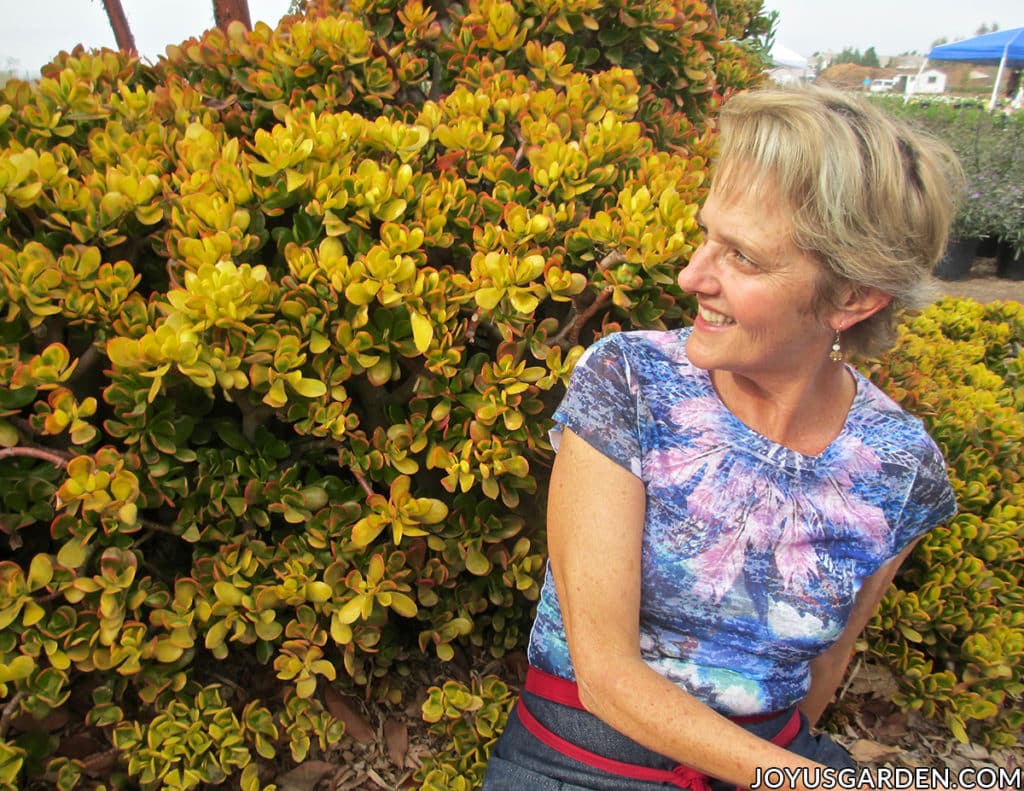
Jade Plant Repotting Guide
Reasons A Jade Plant Needs Repotting
Over time, even these easygoing succulents will need repotting. The most common reasons are that they have outgrown their pots, have become top-heavy and unstable, or their soil has become depleted and lost its nutrients. As a rule of thumb, it’s a good idea to refresh the soil every 5–7 years.
Signs include roots poking out of the drain holes, stunted growth, the plant won’t stay upright on its own, and the soil is no longer holding moisture or is drying out too quickly.
Best Time to Repot Jade Plants
Spring, summer, and early fall are the times for Jade Plant repotting. If you live in a climate where winter comes early, then spring and summer are best. Here in Tucson, fall is mild – I repot up until the end of October. Plant growth slows in winter, so avoid repotting at this time if you can.
Here’s a guide to repotting succulent houseplants. This general guide to repotting plants will be helpful if you’re a beginning gardener.
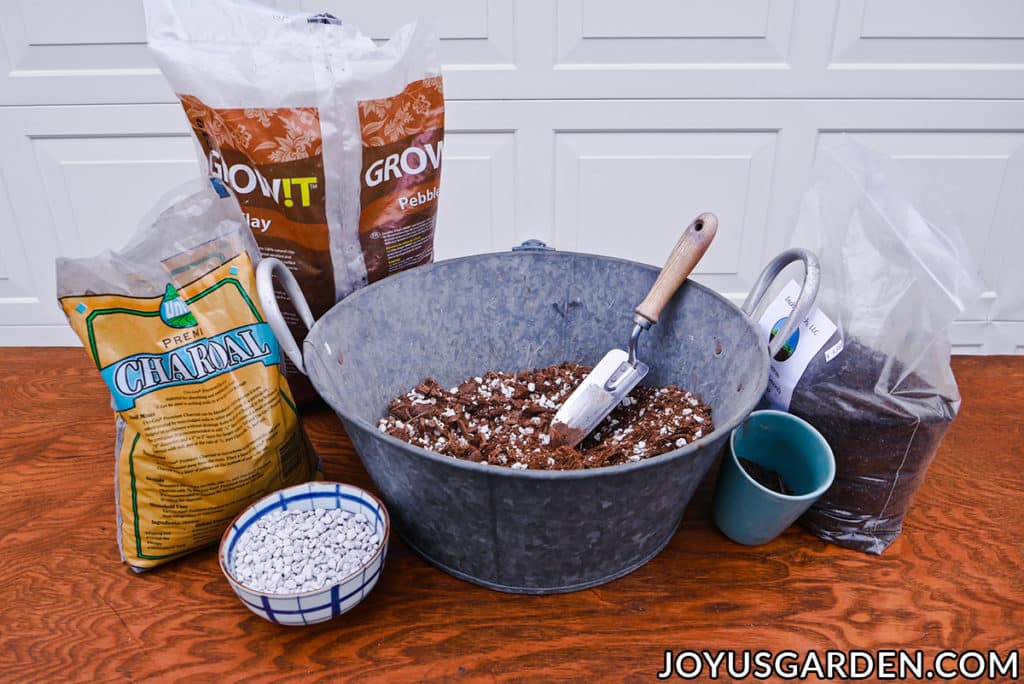
Soil Mix to Use When Repotting Jade Plants
Jade Plants are succulents, so they need a well-draining, aerated potting mix (their roots need to breathe). Water should flow out freely so the mix and roots don’t stay too wet, which can lead to root rot. Since Jade leaves and stems store water, the soil should dry out between waterings.
I want to share this DIY succulent and cactus mix recipe with you. Because I grow a lot of succulents, I always have a batch mixed up and ready to use.
For this project, I direct-planted my Variegated Jade into a ceramic container with a single drainage hole. A plastic grow pot, like the one pictured below, usually has multiple drainage holes, so water flows out more quickly.
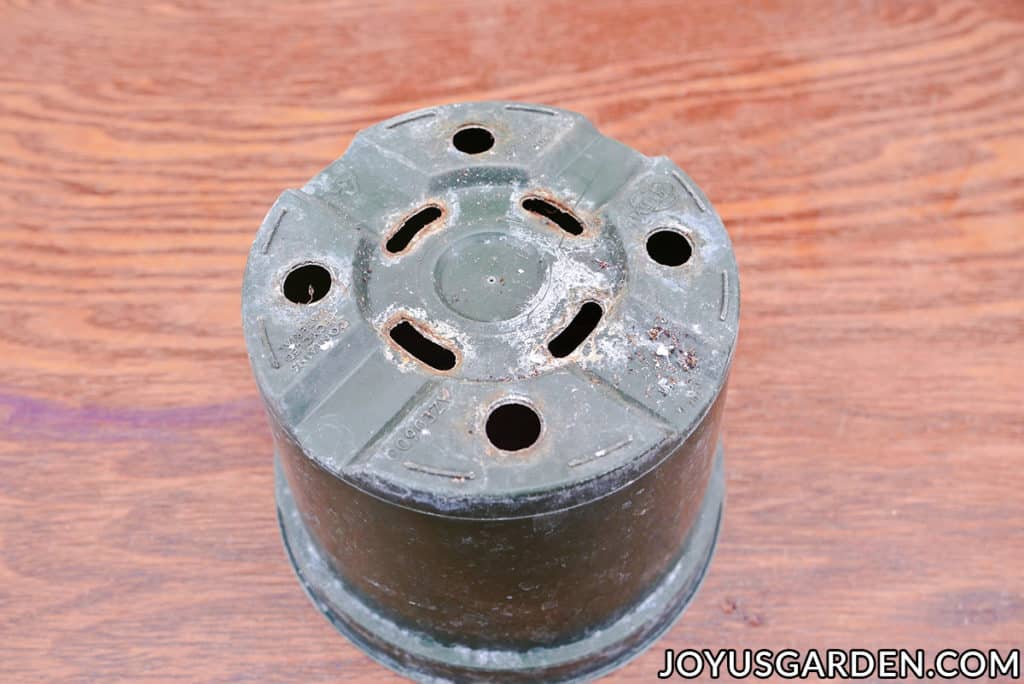
Since the ceramic pot I used has only one drainage hole, I added a couple of extra ingredients I wouldn’t normally use to prevent water from collecting at the bottom. I’ve listed those in parentheses below, in case you want to try them — though you may not need them for your pot. Here’s what I used:
- Clay pebbles – I placed a 1/2-1″ layer of these in the bottom of the pot.
- Charcoal – This not only helps to improve the drainage, but it also absorbs impurities and odors. This a big plus because the plant is directly planted in the ceramic.
- Succulent and cactus mix.
- Pumice. I added a handful of this due to the issue with the single drain hole. If you buy a succulent and cactus mix that looks heavy and poorly aerated, consider adding a handful or two of pumice or perlite to improve drainage and aeration.
- Worm compost and compost. I added a bit of these for natural nourishment. You can see the amounts I used in the video at the bottom of this page.
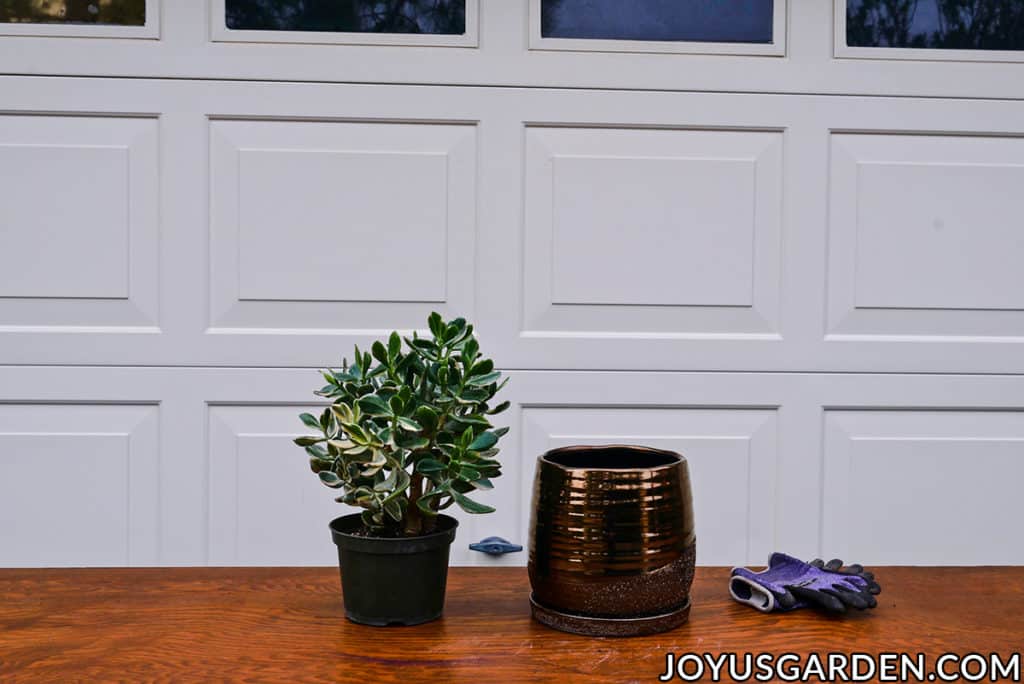
What Type of Pot to Use
In my experience, the type of pot doesn’t matter much when repotting Jade Plants. They’re happy in plastic grow pots, fiberglass, resin, concrete, ceramic, or clay — as long as there’s good drainage.
Pot Size
With most plants, you go up one pot size — for example, from a 4″ pot to a 6″ pot. For Jade Plants, the right pot size depends on both the size and weight of the plant. Smaller plants will do well in a smaller pot, while larger, heavier Jades may need to go up two sizes to help anchor them. Most important: make sure the bottom of the new pot has drainage holes.
Repotting Step-By-Step
I watered the Jade about 7-14 days before the repotting. I generally like to keep succulents on the drier side when repotting them.
Loosen the rootball from its current pot. I easily removed the plant from the pot by pressing on the grow pot. It pulled right out. If your root ball is stubborn to come out, you can use other methods of removal in this guide.
Fill the pot with the mix so that the top of the rootball is even with or slightly above the top of the pot. The mix is very light, and the weight of the plant will cause it to sink gradually over time. I added in a couple of handfuls of compost for nourishment.
Fill in with the mix around the root ball. I compacted the mix by pressing down on it around the sides to get the heavy plant to stand up straight in the light mix. Add more mix if necessary. I topped it with a 1/2″ layer of compost.
Do you have questions about growing indoor succulents? This guide answers your FAQs.
After Care
I let my Jade Plant settle into its new soil mix for 5–7 days without watering. Then, I return it to the same bright spot with plenty of indirect sunlight. Like most succulents, Jades are very easy to care for — after this short adjustment period, you can resume your usual routine.
Jade Plant Care made easy: learn how to grow and care for Jade Plants indoors & outdoors.
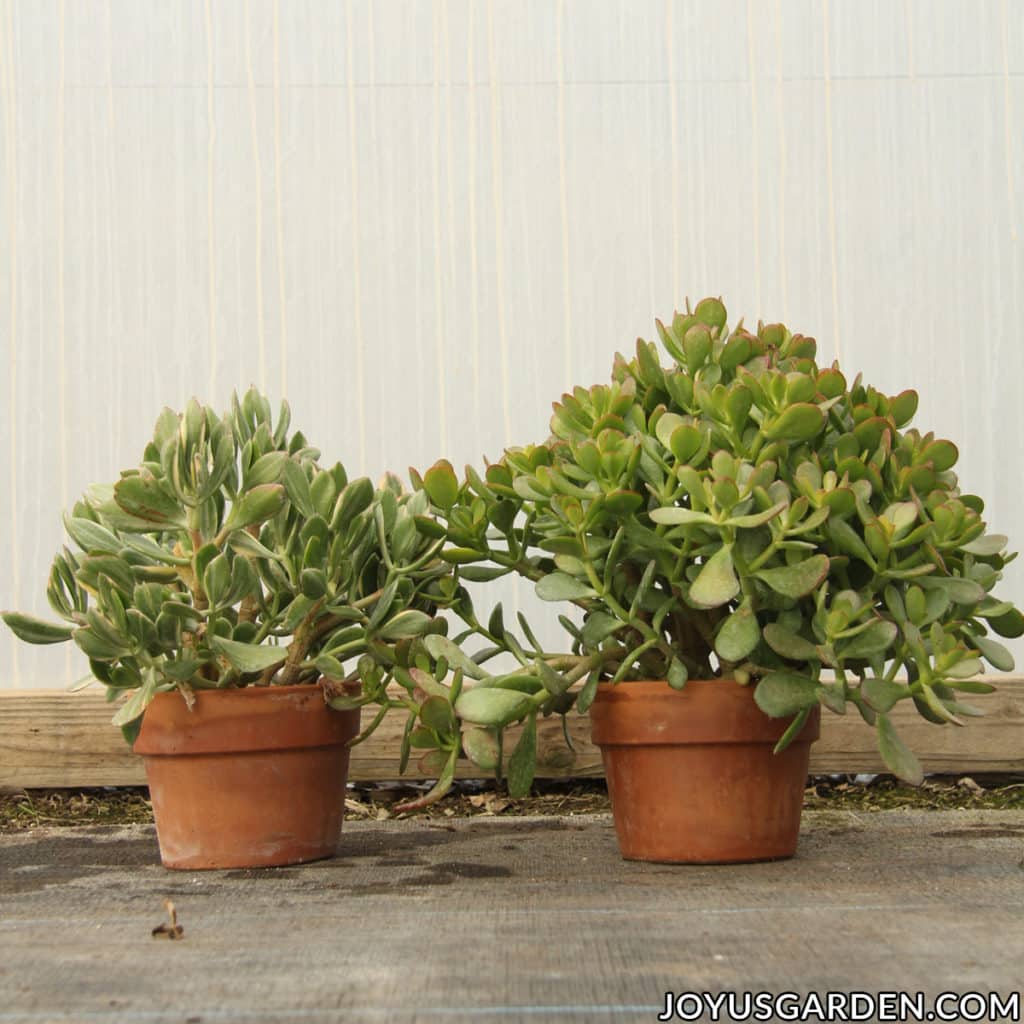
How Often Does a Jade Plant Need Repotting?
Jade Plants have small, shallow root systems. They prefer a snugger pot and could easily be overwatered in a large pot with a lot of soil mass. Heavier, larger plants need a sturdier pot for stability. I’ve seen 3′ Jades in 16″ ceramic pots doing just fine.
Because their root ball stays small, a Jade doesn’t need frequent repotting – every 4–6 years is fine (sometimes longer as they grow more slowly indoors). No need to repot every year!
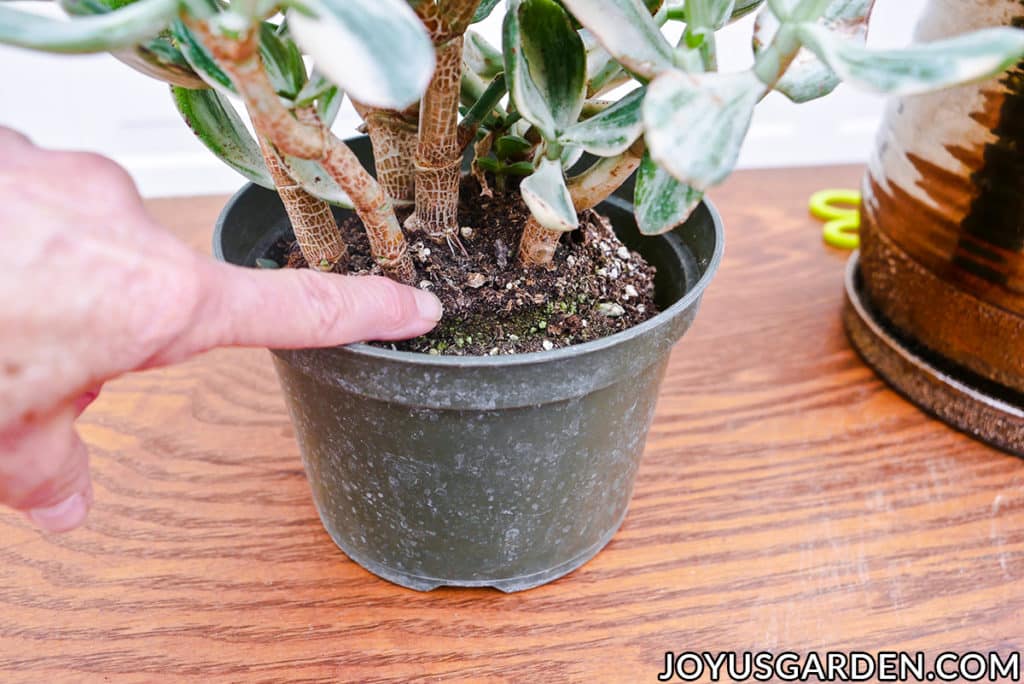
How to Repot Large Jade Plants
One good thing to know: Larger Jade Plants are heavy and can be awkward to handle. With their thick trunks and wide, spreading growth, even a 2-foot Jade can be bulky and cumbersome to repot. Keep in mind that moving up to a bigger pot also means using more soil, which adds even more weight.
I had a large Jade in Santa Barbara and got someone to help me with the repotting process. Having another set of hands not only helps you remove the plant from the pot but also holds it up straight while you fill it with the soil mix.
Be careful when working with this plant because the leaves and stems break off easily. You’re going to lose some in the process, no matter how cautious you are. Thank goodness Jades are easy to propagate!
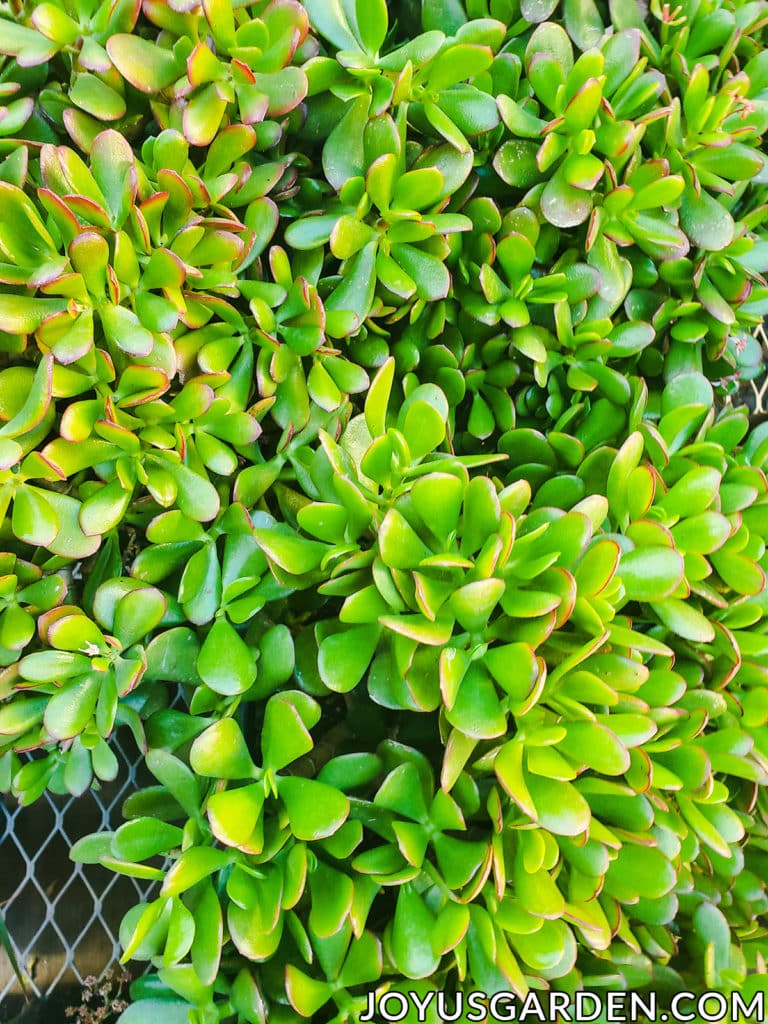
Jade Plant Repotting Video Guide
Jade Plant Repotting FAQs
Can I use regular potting soil for a Jade Plant?
Jades are succulent plants that need a well-draining soil mix because they don’t like sitting in wet soil. Regular potting soil is too heavy and holds excess moisture, which can lead to root rot. Lighten it up by mixing in pumice or perlite. If you grow a few succulents, it’s worth investing in a quality succulent and cactus mix.
Should I water my Jade Plant immediately after repotting? Should I fertilize after repotting?
No on both. Let your succulent settle in for 3-7 days before watering. Ideally, water your jade 5–10 days before you repot. Wait at least a month before fertilizing to give the plant time to adjust and resume growth.
Is it okay to repot when my Jade Plant is blooming?
It’s best not to repot at this time, as the plant is putting its energy into flowering. Wait until the bloom cycle is complete before repotting.
My Jade Plant dropped leaves after repotting — is this normal?
Although it may not happen, a bit of leaf drop is normal. Repotting can cause stress.
Can I repot my Jade Plant in a container without drainage holes?
It’s not a good idea. Jade Plant roots need oxygen to breathe, and soil holding too much moisture can deprive them of oxygen. Drainage holes ensure excess water will freely flow out, preventing root rot.
Do Jade Plants prefer shallow or deep pots?
A shallow pot is better because Jades don’t have a deep, extensive root system. A wide, sturdy pot also helps keep this top-heavy plant from tipping over.
Conclusion: Give your Jade Plant plenty of light, be light-handed with the water, and enjoy its easy care nature — this fleshy leaved succulent will stay gorgeous for years, all with little attention. And the best part? Jade Plants are long-lived, tough as nails, and easy to repot!
Happy gardening,

Did you enjoy this guide? You may also enjoy these gardening tips!
- Guide To Watering Indoor Plants
- Beginner’s Guide To Repotting Plants
- 3 Ways To Successfully Fertilize Indoor Plants
- How to Clean Houseplants
- Winter Houseplant Care Guide
- Plant Humidity: How I Increase Humidity For Houseplants
- Buying Houseplants: 14 Tips For Indoor Gardening Newbies
- 11 Pet-Friendly Houseplants


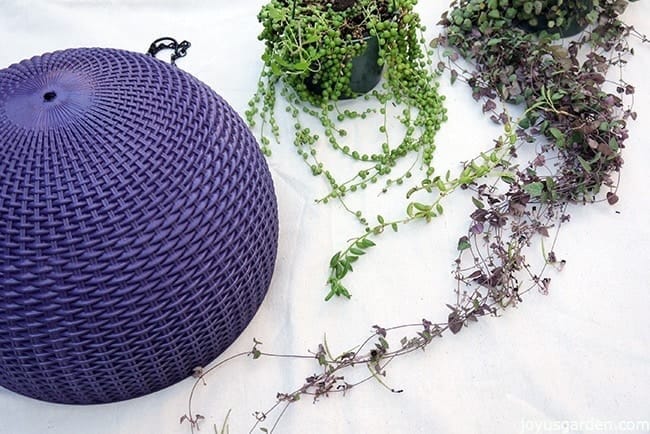
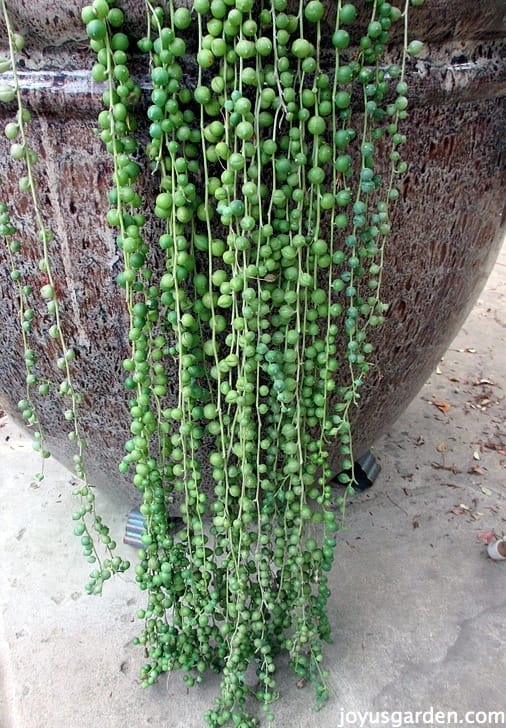
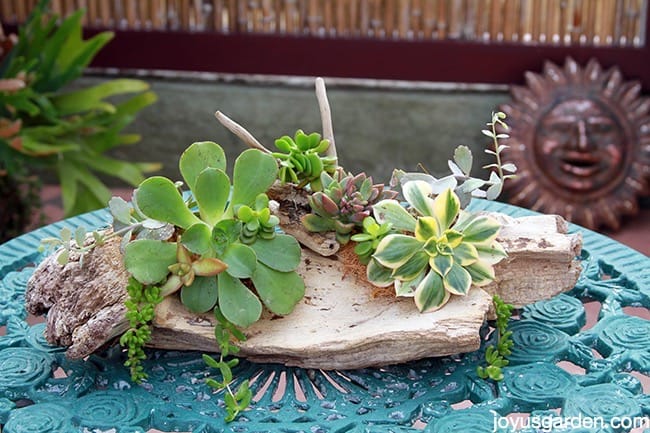
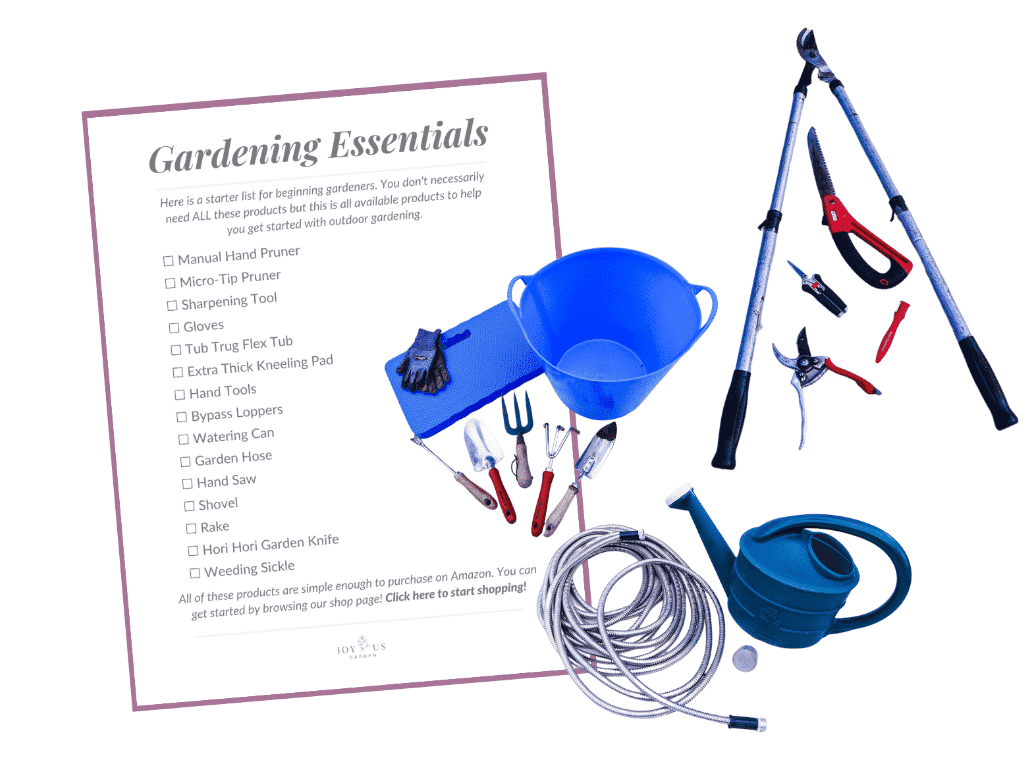
Lovlely planter .. may I ask the store where you bought the planter from?
Hi – Yes, it’s lovely. I bought it at Green things here in Tucson. Nell
Hello. I have an 11 year old jade plant thats been on the same pot for 3 years. I noticed some black spots on the leaves. Is it safe to report on october? I live on the midwest
Hi Han – I repot through October here in Tucson. Spring, summer into early fall are the best times. Do it soon. Nell
do not put gravel or “clay pebbles” on the bottom. it just raises the perched water table in your pot making root rot more of an issue.
it doesn’t make water drain more. it does the opposite.